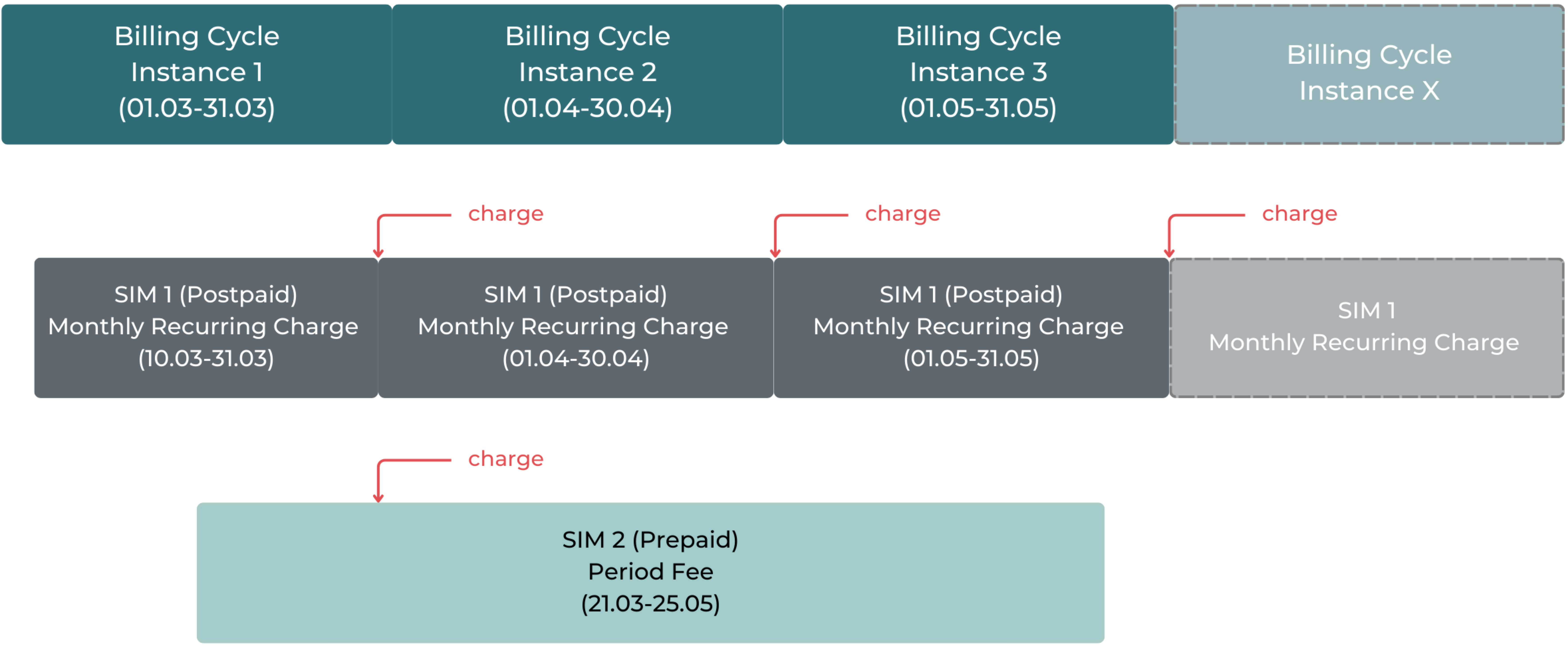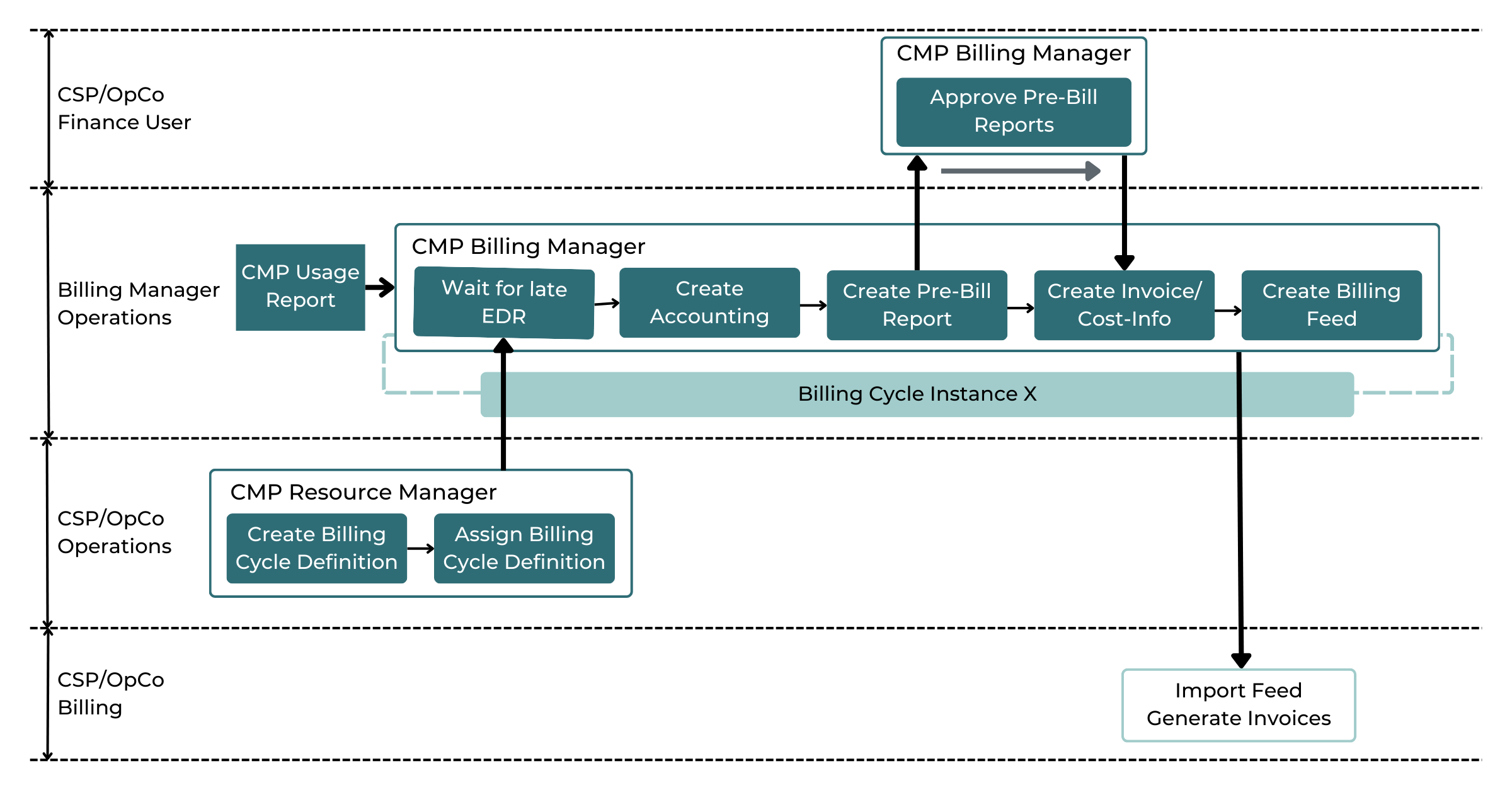Multiple Billing Cycles Management (FT-1001.011)
About this document
Scope
This document provides background information as well as a functional description of the FT-1001.011 Multiple Billing Cycles Management advanced feature. The described feature is supported from the release version 4.0 onwards.
Note
Multiple Billing Cycles Management is an advanced feature and requires a special license. Ensure that you have agreed with Mavoco about the usage of this feature before taking it into use.
This feature is part of the Billing Cycle Management functionality with number FN-1015.
Feature Availability
Feature Version | Available from | Summary of changes |
|---|---|---|
v1 | CMP Release 4.0 | Initial release |
Feature overview
Goals
The aim of the Multiple Billing Cycles Management feature is to allow Service Providers to define and manage one or more Billing Cycles to determine the start of the billing each month.
Functionality of the feature
Billing Cycles define on which day billing starts each month.
In CMP, a Billing Cycle is always one month long and is recurring every month. A Billing Cycle Definition is assigned to each Account in CMP, to assign it to one of the available Billing Cycles.
CMP does support a total of 28 Billing Cycles, one for every day which exists in any month.
CMP is capable of running multiple Billing Cycles in a single month as a means to help distribute the workload for the teams in charge of handling billing in revenue collection processes.
Example
A Service Provider could define three Billing Cycles per month:
Starting on the 7th of every month (will end on the 6th of the following month),
starting on the 14th of every month (will end on the 13th of the following month), and
starting on the 21st of every month (will end on the 20th of the following month).

CMP executes one Billing Cycle Instance of each Billing Cycle Definition per month. Each cycle applies to all Accounts assigned to the related definition and automatically generates all types of costs (debit and credit) as configured in CMP.
The diagram below displays the basic schema of a Billing Cycle Instance, as well as the key phases during the process.

Note:
By default, CMP generates a PDF file for every Billing Cycle and Account, which either reflects the legal Invoice or just a summary of all costs.
It can also be configured to not generate a PDF at all, in case CMP is not used for the legal Invoice and providing a Billing Feed. This way, CMP can significantly reduce the Billing Cycle execution time and the file storage size.
